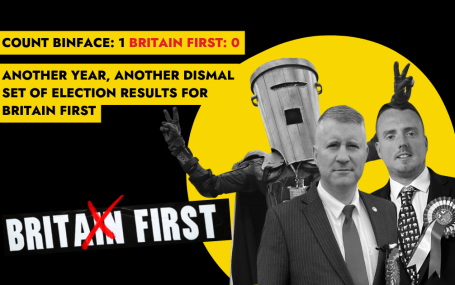HOPE not hate uses cookies to collect information and give you a more personalised experience on our site. You can find more information in our privacy policy. To agree to this, please click accept.
You are keen to do something proactive and positive in your community, but you’re not sure where to start. What to do first? Who to call? Here are seven pointers to get you started.
Setting up a local group can be less daunting then you think. You might want to contact us to see if we know of any likeminded people locally. Talk to friends, neighbours and work colleagues. This is an opportunity to engage people who are similarly concerned about extremism.
Next, call a meeting, making sure that the venue is accessible, appropriate and safe. Publicise it as widely as possible and have a clear idea about the aims and objectives. As well as discussing local concerns this meeting should aim to form a group and also to allocate certain tasks to individuals. The meeting should finish with a formal agreement to form a group and a date and time of the next meeting.
After setting up a group the next important job is to develop a campaign plan. Many individuals might have become involved because they are worried and concerned about local developments but we need to quickly transcend anxiety and hand wringing. We need to quickly identify the exact nature of the threat. Who is the threat and how do they threaten us? What will they do that will threaten harmony in our communities and crucially how will we respond? A campaign plan might change as we go along but our aims and objectives need to be as clear as possible from the outset.
Supporters are the life blood of your group, they are the people who will build the organization required and they are the people who will work hard delivering leaflets or engaging in whatever activity you plan. It is important therefore that supporters feel that they have a voice, that they are listened to and that their input matters.
Supporters will hopefully come from a diverse range of backgrounds and if we are able to continually broaden out our support we will have the opportunity to learn much more and derive a much deeper understanding of the challenges we face. We listen because it’s the right thing to do but our campaign will become much more effective for it.
Capacity, especially for drawn out campaigns, is an issue that will affect all groups at this point. People move on or have life changes that take them away from the group. To continue our ability to intervene we need to continually find ways to build the group. We should avoid complacency and cliquiness at all costs, rather we should be seeing ways of recruiting people through Universities and Colleges, maybe setting up societies on a local campus. Be imaginative and use the contacts that we have outside the group. Has someone written or called into local voluntary sector groups? Have all local Trade Union branches been told about your plans? Faith communities are another powerful constituency to work with and it is fair to say that many Hope not hate initiatives have been greatly enhanced by a local Bishop adding their weight to our message.
Using the media successfully can be a key component of getting our message across. See if any one in the group has any media experience and choose one or two people to take a lead on this work. Get in touch with and compile a list of media contacts. Remember as with leaflets keep press releases brief and to the point. Local newspapers are often desperate for copy, so remember to tailor your words for them – keep it local and relevant. Do not be dispirited if you do not get stories in straight away, plug away and you will find a friendly journalist.
The speed and reach of social media transcends all previous media, so it is definitely worth using social media platforms to spread the word on your campaign. Consider setting set up a Facebook and Twitter account for the campaign you are running, but also bear in mind that the best way to spread the word online is through personal accounts, especially those with lots of followers – so try to get people or organisations with lots of followers to post or repost your content.
It is a good idea to come up with an easy to remember hashtag for a campaign, which people can include in their tweets.
Social media posts that include photos, especially photos with people in them, are far more likely to be read, liked and shared, so take the time to plan your content and include photos or even videos.
Remember to think about online security – for more guidance, see our guide to staying safe.
Every leaflet ever written has got too many words on it! Leaflets are one of the principle ways that we engage with the public so their design and writing are very important. All our previous lessons need to be encapsulated here. Our leaflets need to be positive, truthful, attractive and useful. A good picture is worth a thousand words and can help with making the leaflet friendly and attractive.
Research shows that a typical leaflet takes about seven seconds to get from the door to the bin, so in that time something eye catching and engaging needs to happen. It’s quite a challenge but remember every leaflet ever written has got too many words on it – keep it positive, keep it clear, keep it short!
If you found this useful and you’re keen to get going, you might want to check out our 14 Steps section next

Another year, another dismal set of election results for Britain First In the elections last week, Britain First performed dreadfully in every seat it contested,…